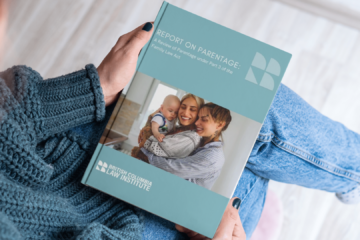Child Protection Project Committee continues examination of definitions and terms used in Child, Family and Community Service Act
October 29, 2019
BY Kevin Zakreski
BCLI’s Child Protection Project Committee continued its review of the Child, Family and Community Service Act at its October 2019 committee meeting. As at its previous monthly meeting, the committee’s focus remained on updating the definitions and terms used in this act, in light of the new terminology that appeared with the coming into force of the Family Law Act in 2013.
There is broad recognition of the value of harmonizing the definitions and terms used in the Child, Family and Community Service Act with those used in British Columbia’s major family-law statute (the Family Law Act). But it’s also important to avoid turning this job into a rote task. Each new definition or term must be examined for its effects on act that has some different purposes and goals than the Family Law Act.
At the October meeting, the committee’s attention turned to the term domestic violence. This term is used in Child, Family and Community Service Act, primarily in connection with the ground for protection found in section 13 (1) (e) (“[a] child needs protection in the following circumstances: . . . if the child is emotionally harmed by . . . living in a situation where there is domestic violence by or towards a person with whom the child resides”). The section goes on to provide that “a child is emotionally harmed if the child demonstrates severe (a) anxiety, (b) depression, (c) withdrawal, or (d) self-destructive or aggressive behaviour.” But nothing in the act defines the term domestic violence.
In contrast, the Family Law Act features a definition of a related term, family violence:
“family violence” includes
(a) physical abuse of a family member, including forced confinement or deprivation of the necessities of life, but not including the use of reasonable force to protect oneself or others from harm,
(b) sexual abuse of a family member,
(c) attempts to physically or sexually abuse a family member,
(d) psychological or emotional abuse of a family member, including
(i) intimidation, harassment, coercion or threats, including threats respecting other persons, pets or property,
(ii) unreasonable restrictions on, or prevention of, a family member’s financial or personal autonomy,
(iii) stalking or following of the family member, and
(iv) intentional damage to property, and
(e) in the case of a child, direct or indirect exposure to family violence.
Family violence was deliberately crafted to be broad in its reach, encompassing not just physical abuse but also psychological, spiritual, and financial abuse.
Is this broad conception of family violence appropriate for the purposes of the Child, Family and Community Service Act? Or should that act adopt a more focused term, which could be geared more tightly to the purposes of the act, even if this approach requires a departure from the terminology of the Family Law Act? The committee grappled with these and related questions in the meeting.
The goal of the committee’s review is formulating tentative recommendations for law reform, which will be published in a consultation paper later in the project’s life cycle. The consultation paper will allow the public to comment on the committee’s proposals to modernize the Child, Family, and Community Service Act.












































